Key takeaways:
- Focus on audience segmentation to improve engagement and tailor messages based on interests and behaviors.
- Craft compelling subject lines and include valuable content to increase open rates and conversions.
- Continuously analyze metrics, such as open rates and click-through rates, to refine strategies and enhance email performance.
- Implement storytelling and personalization to build deeper connections with subscribers and foster loyalty.
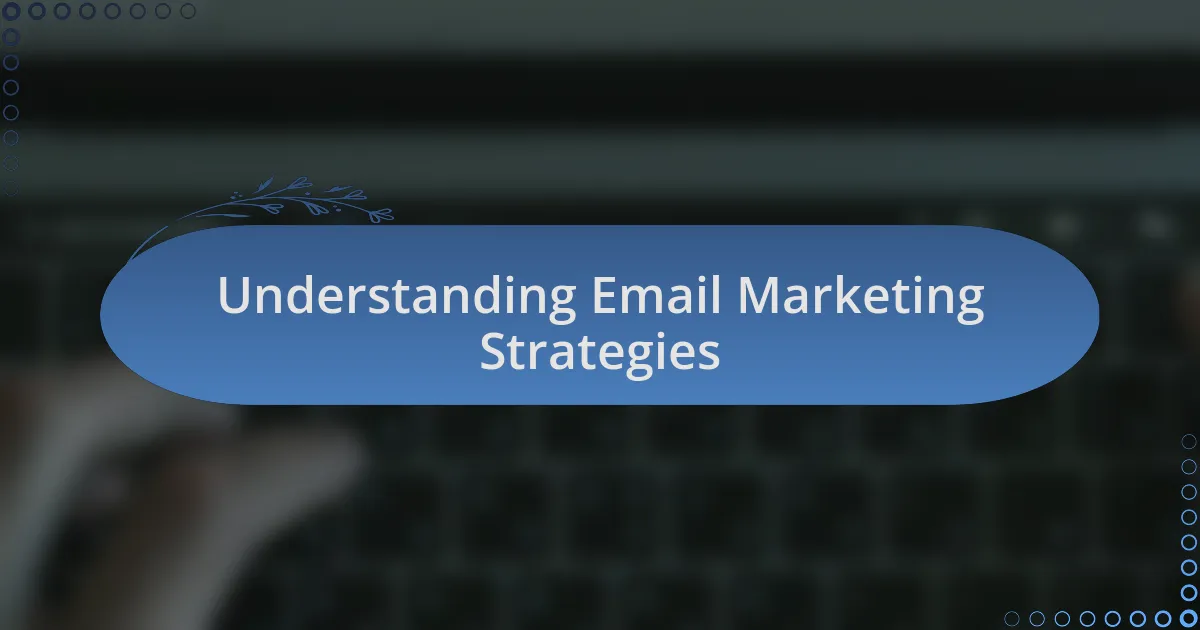
Understanding Email Marketing Strategies
Email marketing strategies hinge on understanding your audience and crafting messages that resonate with them. I remember feeling overwhelmed at first by how many tactics were available, but I found that focusing on segmentation really transformed my approach. Initially, I had a one-size-fits-all strategy, but once I began categorizing my audience based on their interests and behaviors, engagement skyrocketed.
Another crucial element is the subject line; it’s your first impression. I often ask myself, “What would make me open this email?” When I crafted subject lines that told compelling stories or offered clear value, I noticed a significant uptick in open rates. It’s fascinating how a few well-chosen words can hook someone’s attention and spark curiosity.
Lastly, testing and analyzing your campaigns is vital. When I ran A/B tests on different call-to-action buttons, the data revealed preferences I hadn’t anticipated. This experience taught me that constant iteration is the heart of email marketing success; it’s not just what you send, but how you adapt your strategies based on real feedback from your audience.
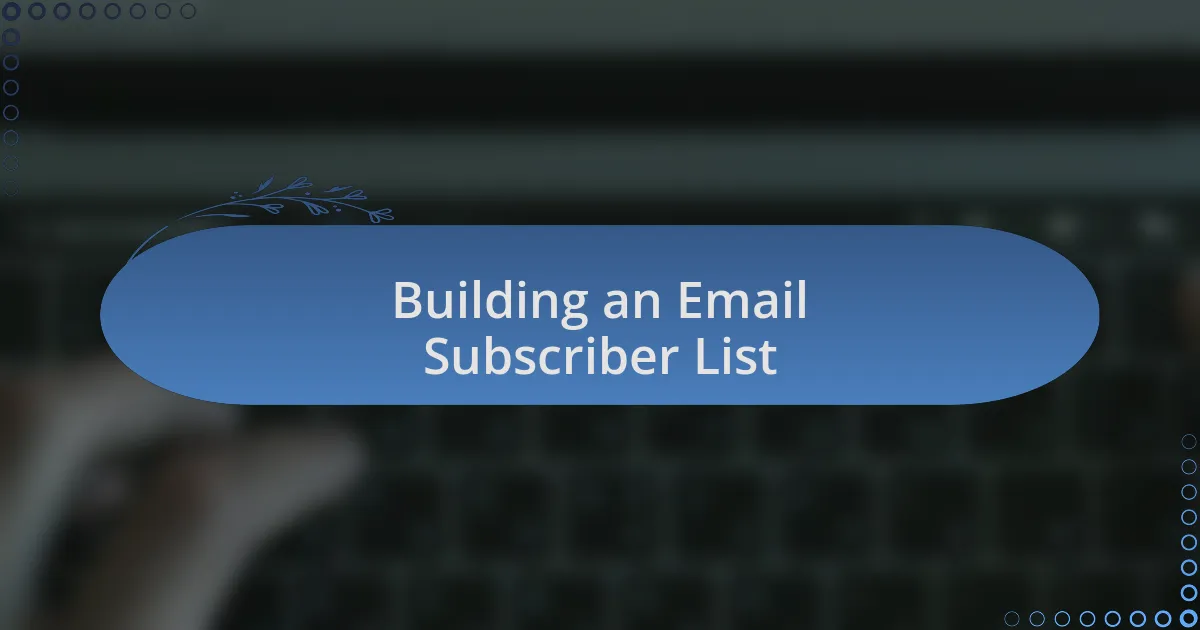
Building an Email Subscriber List
Building an email subscriber list is fundamentally about creating value for your audience. I recall when I first started, the thought of gathering subscribers felt daunting. However, by offering a free downloadable resource—a guide that compiled essential web development tips—I saw my list grow surprisingly fast. It made me realize that giving something of value upfront can be the best way to encourage sign-ups.
As I nurtured my growing list, I learned how important clarity is in my signup process. Initially, I asked for too much information, and the response was lackluster. After simplifying the form to just an email address, I often wondered, “What do people really want to share?” The increase in sign-ups was immediate, and it hit me that minimizing barriers can lead to greater engagement.
To foster a strong subscriber relationship, I often share behind-the-scenes updates about my projects. This personal touch not only keeps my audience engaged but also builds trust. I’ve noticed that when subscribers feel connected to the story behind the services, they’re more likely to stay on the list and, eventually, become clients. Have you ever felt more invested in a project after knowing its origin story? Embracing this strategy has truly transformed my approach to email marketing.
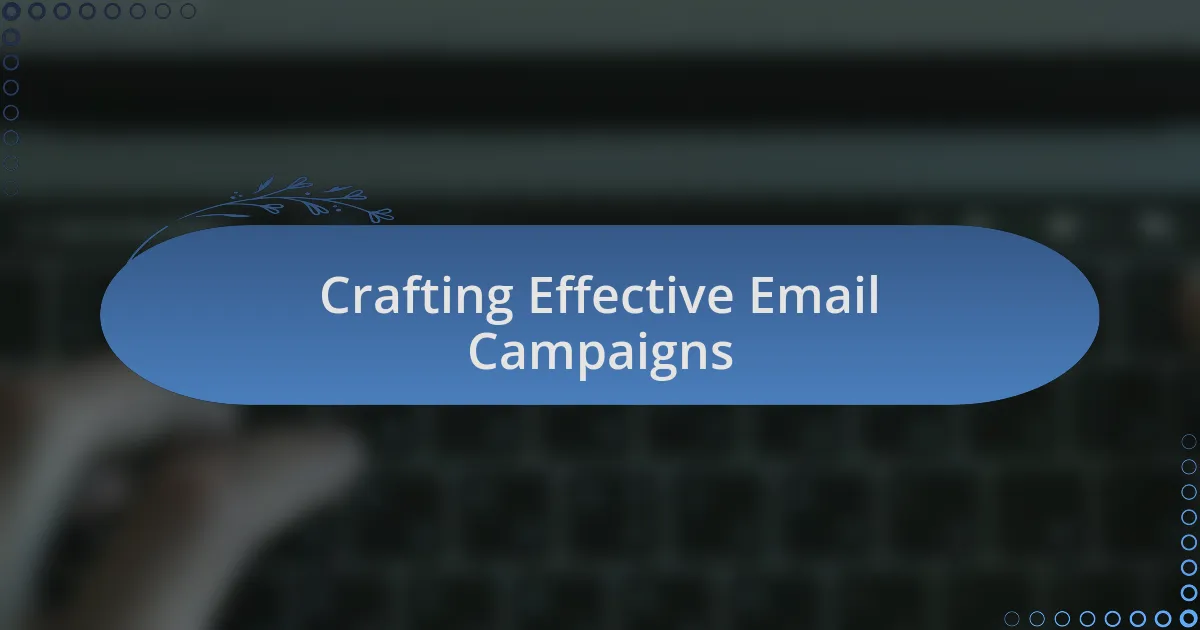
Crafting Effective Email Campaigns
Crafting an effective email campaign starts with understanding your audience’s needs. I remember when I designed my first campaign focused on the latest web development trends. I tailored the content based on subscriber feedback, and the response was overwhelming. Suddenly, I was getting replies asking for more tips and resources, which reinforced how vital it is to listen to what your audience craves.
Another key element is striking the right balance between promotion and value. Early on, I hesitated to ask for sales in my emails, fearing it might push subscribers away. However, I discovered that including a carefully worded call-to-action for a limited-time offer led to a spike in conversions. It made me realize that when people get something useful from the content, they are often more receptive to offers. Have you considered how your audience perceives your messages?
Lastly, the design and timing of emails matter significantly. I learned this from a mistake I made with a poorly formatted email sent on a Monday morning. Not surprisingly, the open rates plummeted. Through trial and error, I found that clean design and strategic sending times, like Wednesday afternoons, led to higher engagement. I’ve seen firsthand how a little attention to detail can reap big rewards in your campaigns.
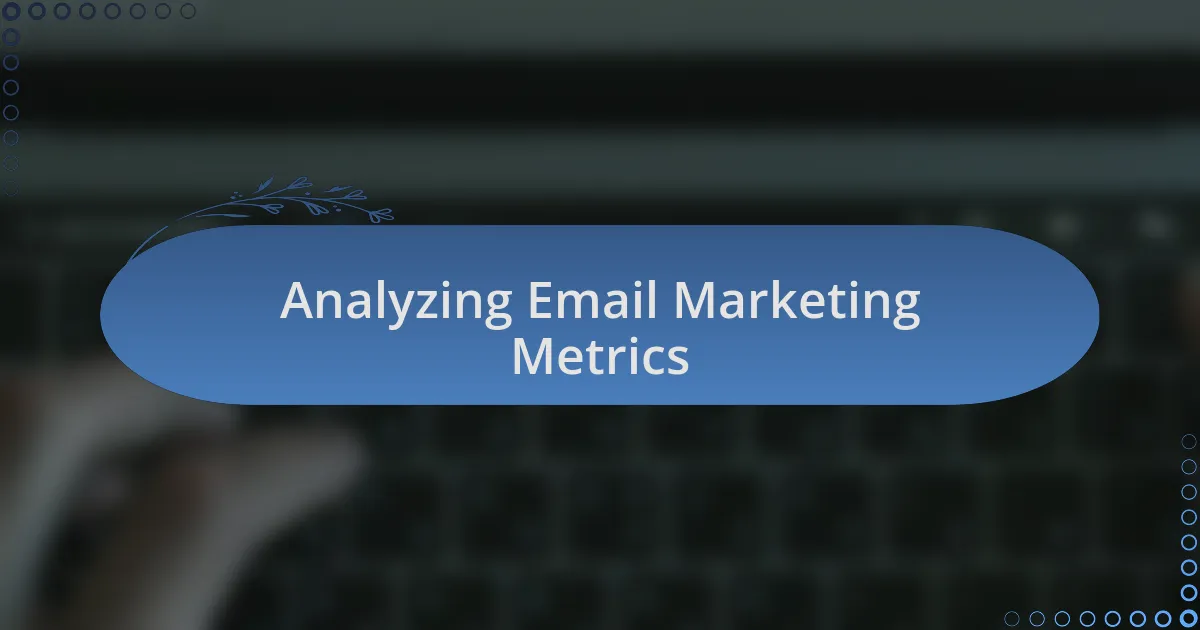
Analyzing Email Marketing Metrics
Analyzing metrics is where the magic really happens in email marketing. I vividly recall a moment when I scrutinized my open rates after launching a new campaign. The numbers revealed a surprising insight: certain subject lines drew more attention than I expected. It made me wonder—how many potential subscribers might I lose with a lackluster title? Diving into these details transformed my approach to crafting subject lines.
Click-through rates, or CTRs, have also become my holy grail for understanding engagement. I remember a campaign that encouraged readers to download a free web development guide. The buzz in my inbox was telling. Curiously, the emails with personalized greetings saw a significant lift in engagement versus the ones that weren’t personalized. That experience taught me that small adjustments can lead to remarkable changes in performance. Have you examined how personalization affects your own campaigns?
Beyond just opens and clicks, metrics such as conversion rates provide a fuller picture of success. I once launched a series of emails that aimed not only to inform but also to drive traffic to my services. The conversions were modest at first, but analyzing the user journey showed me that many engaged but didn’t convert right away. This inspired me to incorporate follow-up emails, nurturing that relationship over time. Isn’t it fascinating how metrics can guide our next steps in building lasting connections with our audience?
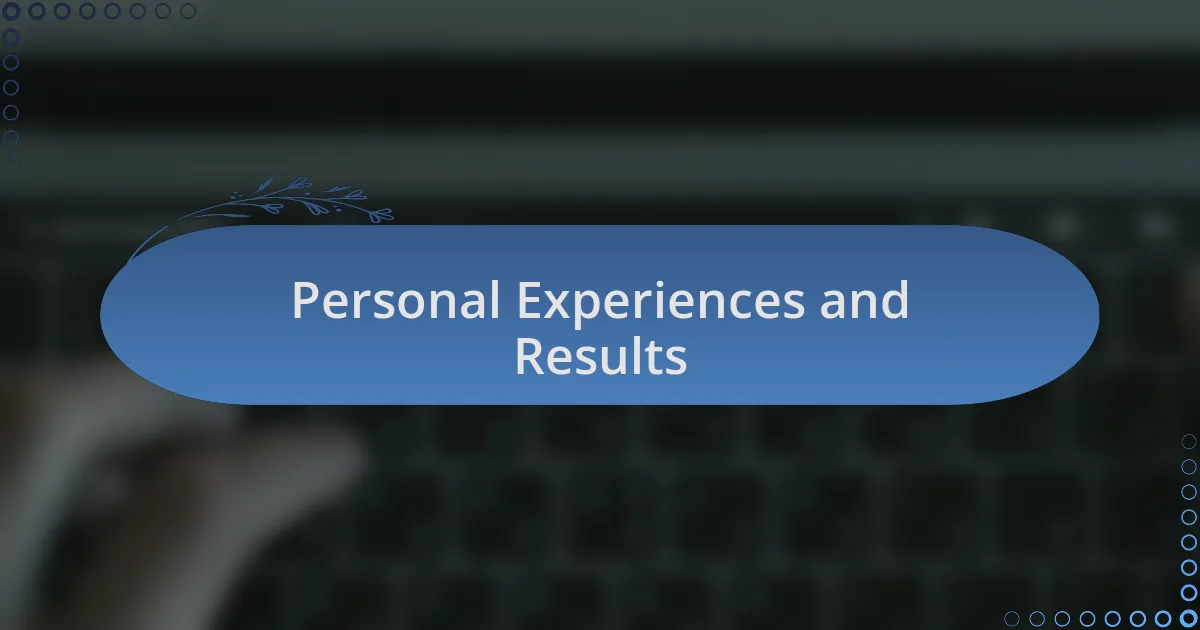
Personal Experiences and Results
In my journey of utilizing email marketing, I learned the power of storytelling. I remember crafting a narrative around a recent project I completed, weaving in challenges and victories. When I hit “send,” I felt a mix of excitement and vulnerability. The response was overwhelming—subscribers not only engaged but shared their own stories in return. That connection transformed a simple marketing effort into a community conversation. Have you ever felt that such personal touches could resonate more deeply with your audience?
I also faced challenges that taught me valuable lessons along the way. There was a time when I sent out a promotional email that fell flat. The click-through rates were disheartening, leading me to question my approach. As I analyzed the feedback, I realized that the content didn’t align with my audience’s current needs. This experience pushed me to refine my understanding of my subscribers, leading to more targeted campaigns that ultimately increased engagement. Reflecting on it now, I wonder—have you ever had to pivot your strategy based on audience feedback?
One of my most rewarding outcomes came after implementing a series of segmented emails. I took the time to classify my audience based on their interests and past interactions. The response was nothing short of exhilarating. Engagement skyrocketed, and I was able to foster a deeper sense of loyalty amongst my subscribers. It made it clear that personalization isn’t just a buzzword; it’s fundamental in email marketing. Have you considered how segmentation could enhance your own email strategies?